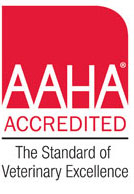Educational Articles
-
Bad breath (halitosis) is caused by bacteria, plaque, tartar, decomposing food particles, or death of tissue. Treatment of halitosis in cats involves eliminating the cause(s). The teeth need to be thoroughly cleaned and polished under general anesthesia. Teeth affected by advanced periodontal disease or tooth resorption need to be extracted. Reducing the accumulation of plaque, tartar, and resulting halitosis can be achieved by using VOHC-accepted products.
-
Bad breath (halitosis) is caused by bacteria, plaque, and tartar. Once halitosis occurs, professional veterinary oral prevention, assessment, and treatment is needed. Teeth affected by advanced periodontal disease need to be extracted. Reducing the accumulation of plaque, tartar, and resulting halitosis can be achieved by using VOHC-accepted products.
-
Halloween can be fun for the whole family including pets but it can also be a scary or dangerous time for pets. Costumes, candy, and noises can cause multiple problems such as stress, poisoning, and anxiety that may cause them to run away or react aggressively. Keep them in mind when planning your holiday and talk to your veterinarian if you need help with anxiety issues.
-
Head halters can provide better control and safety for some dogs. A proper fit with gentle leash handling and positive reinforcement training is required to make a head halter successful. Some dogs may find the head halters aversive, which means it is not the right tool for them.
-
Guinea pigs can be hardy and easy to care for when provided an appropriate environment for their unique needs. Like all animals, guinea pigs are susceptible to certain problems and diseases. This handout outlines the diagnosis, treatment, and prognosis for some of the more common health problems of guinea pigs.
-
Rodents commonly develop certain health problems, including rabies (unlikely in pet rodents housed inside), hair barbering, foot necrosis, vitamin C deficiency, heat stroke, antibiotic toxicity, chromodacryorrhea, diarrhea, bone fractures, bacterial skin infections (dermatitis), and seizures.
-
This handout outlines the various health registries in existence that strive to improve the health of dogs and cats. Included in this list are the Canine Health Information Center, Orthopedic Foundation for Animals, Companion Animal Eye Registry, Animal Registry of Certified Health, and the Cat Phenotype and Health Information Registry. Also discussed are canine breed-specific registries, along with the National Pet Microchip Registration.
-
Just like humans, dogs derive health benefits from regular exercise. An important aspect of facilitating, enhancing, lengthening, and strengthening our relationships with our canine companions is to keep them strong and fit through physical activity.
-
A pet hedgehog’s diet should mainly consist of high-quality hedgehog food mixed with high-quality, low-fat cat food. The diet may be supplemented with certain insects, fruits, and vegetables, which are listed in this handout. Foods that should be avoided are also listed. Hedgehogs have a propensity for obesity if their food intake is not monitored or controlled.
-
Hedgehogs are active animals and require lots of room to move around and exercise. They are also very good climbers, so it is important to choose an enclosure that your hedgehog cannot escape from. Other factors include temperature control, a respite from bright light, and appropriate bedding and toys that are safe for this unique pet.

